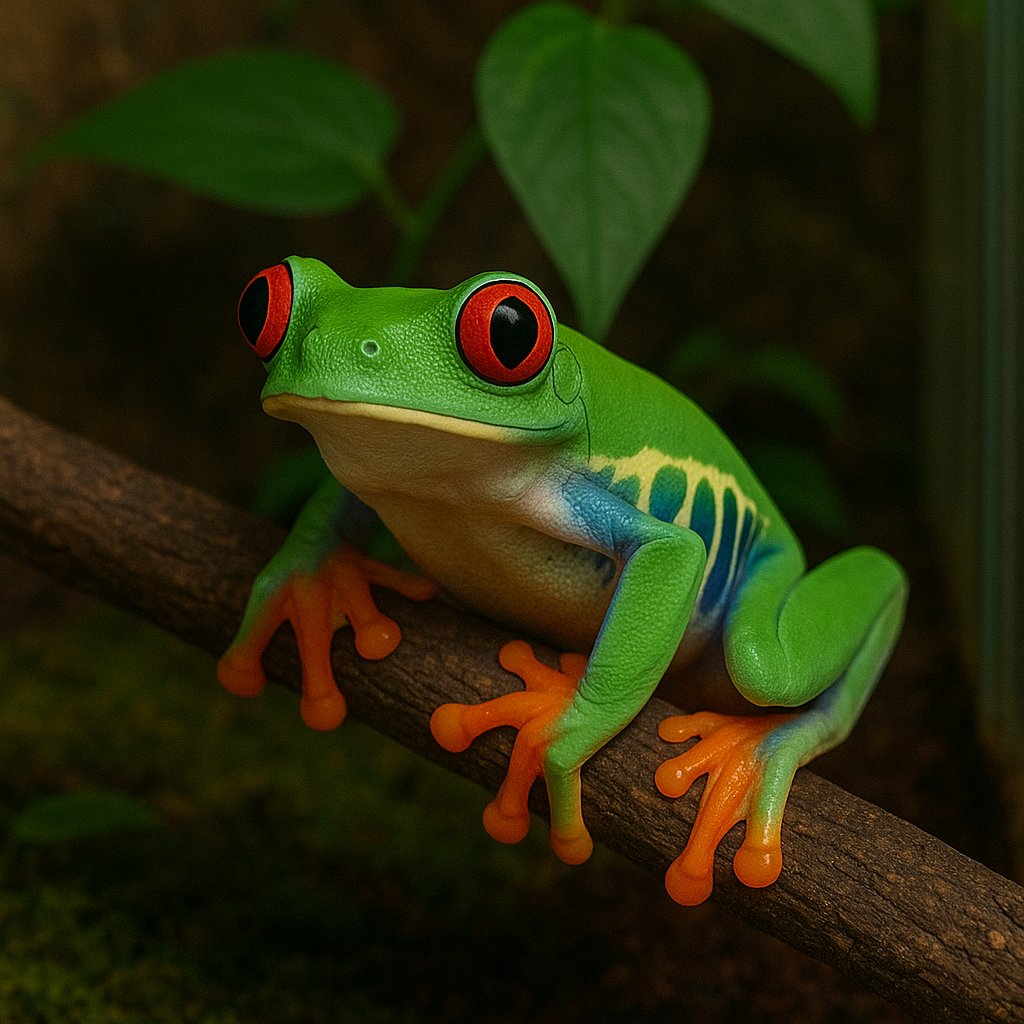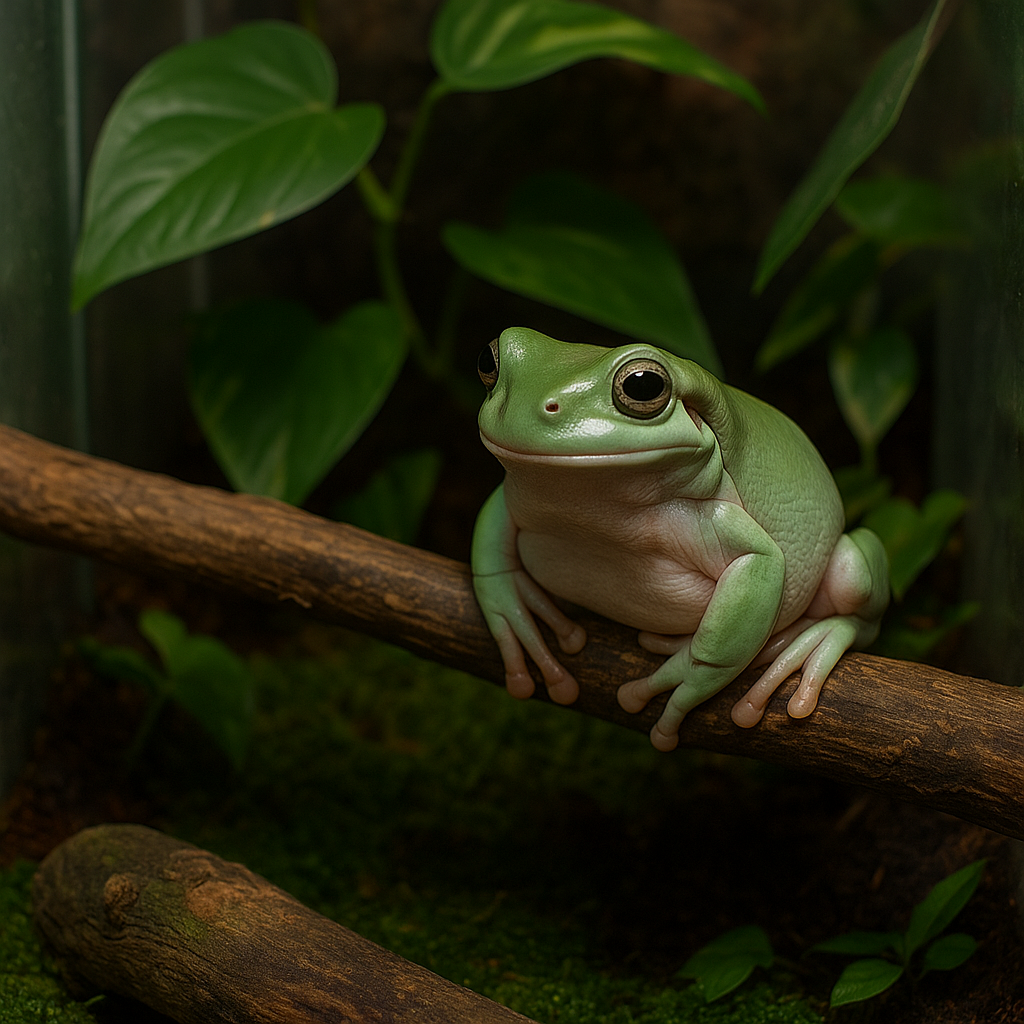Milk Frog Care UK Guide
Amazon Milk Frogs (Trachycephalus resinifictrix) are one of the most striking and charismatic tree frogs in the hobby. Native to South America, these frogs thrive in warm, humid conditions — but keeping them successfully in the UK means accounting for cooler winters, central heating, and our less-than-tropical climate.
Enclosure Setup
Milk frogs need vertical space. A minimum of 45x45x60cm is recommended for a pair, though larger is always better. Include climbing branches, cork tubes, and plenty of live plants. Bromeliads and pothos are favourites, offering both cover and humidity regulation. Always provide a secure lid — these frogs are stronger than they look.
Heating & Humidity
Day temps of 24–27°C and a slight night drop are ideal. Use a reliable thermostat and gentle heat source (ceramic bulbs or heat mats on the side, never under the tank). Aim for 70–90% humidity. Automated misting systems are a huge help in UK homes, especially during winter when central heating dries the air.
Diet
Milk frogs are enthusiastic eaters. Offer a rotation of gut-loaded fruit flies, crickets, dubia roaches, and the occasional waxworm. Dust with calcium at least every other feeding, and use a multivitamin weekly. Juveniles should be fed daily, adults every 2–3 days.
Breeding
Breeding Milk Frogs in the UK requires careful environmental cycling. Increase misting to mimic the rainy season, and provide a large water feature for egg laying. Tadpoles are relatively straightforward to rear, feeding on algae wafers and boiled lettuce until metamorphosis. Check out our tadpole section for rearing supplies.
Common Pitfalls
The two biggest mistakes UK keepers make are allowing vivariums to dry out in winter and overfeeding fatty insects. Stick to a routine, monitor humidity, and you’ll have frogs that thrive for years.



